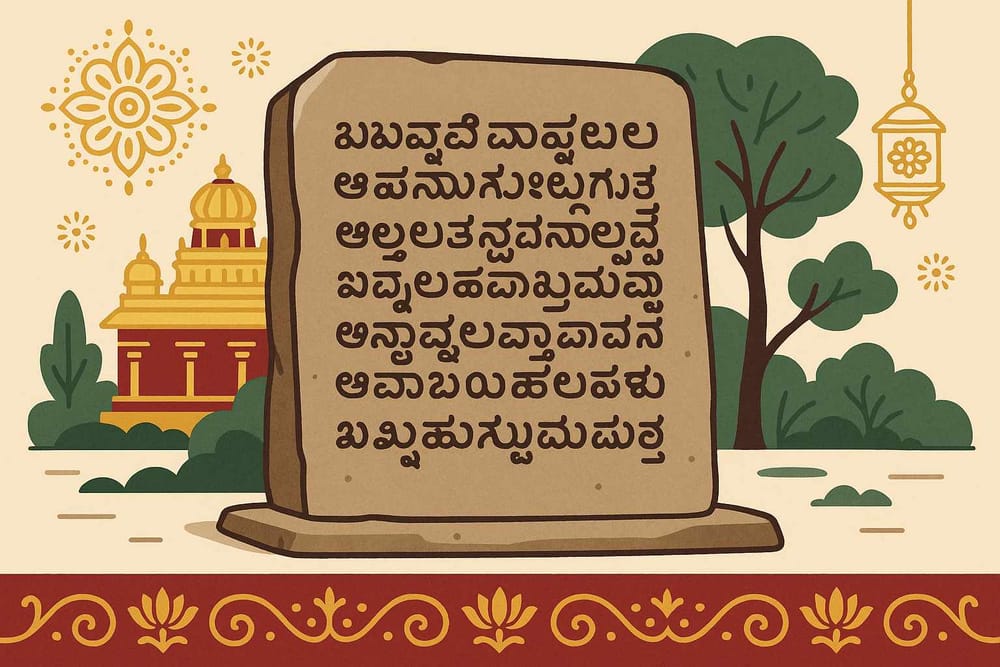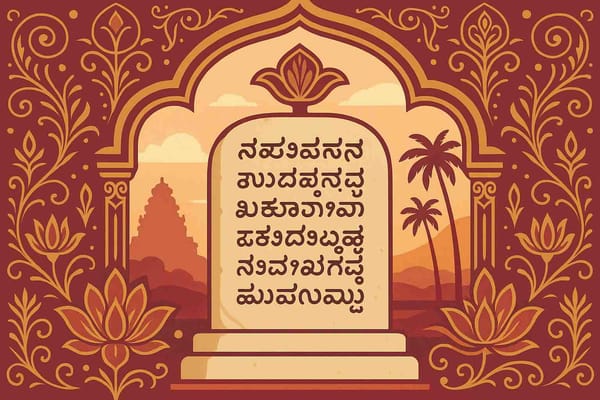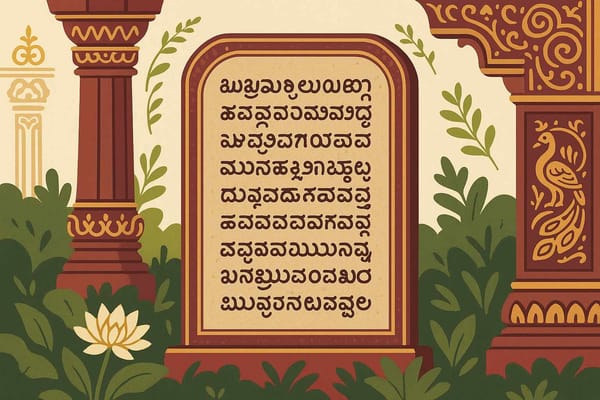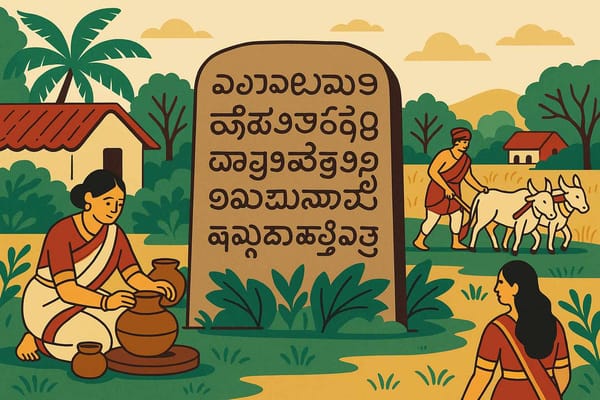
Halmidi Inscription: Kannada Literature's Dawn Explored
Imagine walking through a quiet village in Karnataka, the air filled with the familiar sounds and smells of home. In such a simple, unassuming place called Halmidi, in the Hassan district, a piece of our history lay waiting. A stone slab, which turned out to be not just any stone, but the very first chapter of Kannada's written story. This is the tale of the Halmidi inscription, a discovery that feels like finding the first words of your mother tongue, carefully carved for eternity.
Dating back to around 450 CE, this isn't just an ancient artifact for a museum; it's the oldest proof of our Kannada language in its written form. It’s a direct message from our ancestors, a powerful symbol of Karnataka's deep-rooted cultural identity and a matter of immense pride for every Kannadiga.
A Glimpse into the Past: The Era of the Kadamba Kings
To truly understand the importance of this inscription, we must travel back in time to the 5th century. This was the era of the Kadamba dynasty, rulers who were true sons of the soil. In a time when Sanskrit and Prakrit were the languages of power and administration across much of India, the Kadambas did something revolutionary. They gave our own language, Kannada, a seat of honour. This inscription is the proof of their vision.
So, what story does this ancient stone actually tell? Many people wonder about its contents. It’s not a poem or a mythological tale, but a royal edict detailing a land grant. It mentions a warrior named Vijayarasa and honours his bravery in battle. The use of administrative terms like "mandala" (region) and "sime" (boundary) shows us that Kannada was not just a spoken dialect; it was a sophisticated language of governance, used for official records and public communication.
The Beauty of Halegannada: Our Language in its Infancy
The Halmidi inscription is written in Halegannada (Old Kannada), using a script that is a variation of Brahmi. Seeing these characters is like looking at a family album and finding a picture of your great-great-grandparent as a child. The features are familiar, the connection is instant, yet it's from a time you can only imagine. It shows the beautiful transition of our language, laying the foundation for the rich Kannada literature that would flourish for centuries to come.
This early use of Kannada for official purposes was a pivotal moment. It marked the rise of a distinct regional identity and set a precedent for future kingdoms to patronise and enrich the language. It was the dawn of a new era, one where our own voice began to be recorded and respected.
A Living Legacy: A Symbol of Pride and Identity
For Kannadigas, the Halmidi inscription is far more than a historical fact. It is a symbol of our cultural self-awareness and linguistic pride. It’s the starting point of a literary journey that has given us countless poets, writers, and thinkers. It reminds us that our roots are deep and our heritage is rich with wisdom and strength.
- The Bedrock of Kannada Literature: This single inscription is considered the cornerstone that paved the way for masterpieces like Kavirajamarga and the works of Pampa and Ranna. It's the first step in a long and glorious literary marathon that continues even today. The journey of our language is a fascinating story, much like the echoes of dharma found in our great epics.
- Preserving for the Future: A common question is whether this precious artifact is safe. Yes, it absolutely is. The original Halmidi inscription is carefully preserved at the Department of Archaeology and Museums in Bengaluru. To ensure that the people of its home village can also cherish this legacy, a beautiful fiberglass replica is housed under a specially built mantapa in Halmidi, making it a place of historical pilgrimage.
The discovery of this inscription in 1936 was a moment of celebration, and even today, it continues to inspire us. It teaches us the importance of preserving our language and honouring the traditions that shape our identity.
Just as the Halmidi inscription preserved the first words of Kannada, at Bhaktilipi, we are on a heartfelt mission to preserve and share our timeless devotional stories and literature. We believe that these ancient words hold profound wisdom that can guide and inspire us today. If you feel a connection to our shared heritage, we invite you to explore our world of devotional knowledge.
Stay connected with stories that nourish the soul by subscribing to our newsletter and following our journey on social media:
Conclusion: The Stone That Continues to Speak
The Halmidi inscription is a timeless gift from our ancestors. It is a powerful reminder that our language has a history, a legacy, and a voice that has echoed through nearly sixteen centuries. It stands as a testament to the vision of the Kadamba kings and the enduring spirit of Karnataka. It isn't just a relic of the past; it’s a living piece of our identity, a source of endless inspiration, and a story etched in stone, forever.
A passionate group of people dedicated to preserving India's knowledge of Dharma, Karma, and Bhakti for ourselves and the world 🙏.
Comments
Related in

Halmidi Inscription: Decodes Past-Significance Reveals
Have you ever walked through an old temple or a historic site and wondered what stories the stones could tell if they could speak? In the heart of Karnataka, there is one such stone that does speak. It tells a tale from a time when a language, rich and full

Decoding the Halmidi Inscription- Ancient South India's Mysteries Explained
Imagine standing in a quiet village, the air filled with the scent of wet earth. Before you is a simple stone slab, but it's not just any stone. It’s a portal to the past. On its surface are letters carved over 1500 years ago, the very first

Halmidi Inscription Reveals Ancient Indian History
Imagine walking through a quiet little village, where life moves at its own gentle pace. You pass by an ordinary-looking stone slab, unaware that it holds a secret centuries old—a voice from the past waiting to be heard. This is the story of the Halmidi inscription, a discovery that
